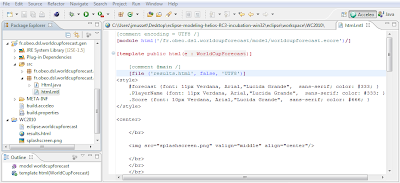Several months ago, at Eclipse Con 2010, I presented a talk titled "Acceleo Code Generation : Let's start with an Android example". This is the demo.
At Eclipse Summit Europe, we will do the talk again. This time, I won't participate... But, Mikael Barbero and Stephane Begaudeau will show an advanced version of this tutorial : "Creating a Language for Android Apps with Eclipse Modeling". Both are software engineers at Obeo. They have worked on this 4 hours tutorial with Jan Koehnlein and Holger Schill from Itemis.
In this tutorial, attendees will create working Android applications using Eclipse modeling techniques. This talk will start with a short presentation of Android and its development tools. Then the attendees will learn how to define abstractions using EMF Ecore and how to create a language and an editor for these with Xtext. Finally, they will implement a generator that creates the Java and XML source code of the Android application with the help of Acceleo. The team will demonstrate how these ingredients are integrated into the Eclipse workbench just like Java and XML do.
Thank you guys for the good job you have done to prepare this tutorial. That kicks ass! The result seems to be very impressive...
This tutorial will also be interesting for beginners... Being an expert at code generation or Acceleo is not necessary to get started on your first code generator : using the Acceleo editor and the powerful features it exposes (completion, syntax highlighting, on-the-fly compilation, quick outline, ...), it is very easy to get started once you understand the most basic principles.
Flickr/androids eat apples!/laihiu
Goulwen Le Fur will also be at Eclipse Summit Europe 2010 and he will talk about EEF, this very usefull component I have talked about several times this year.

















































